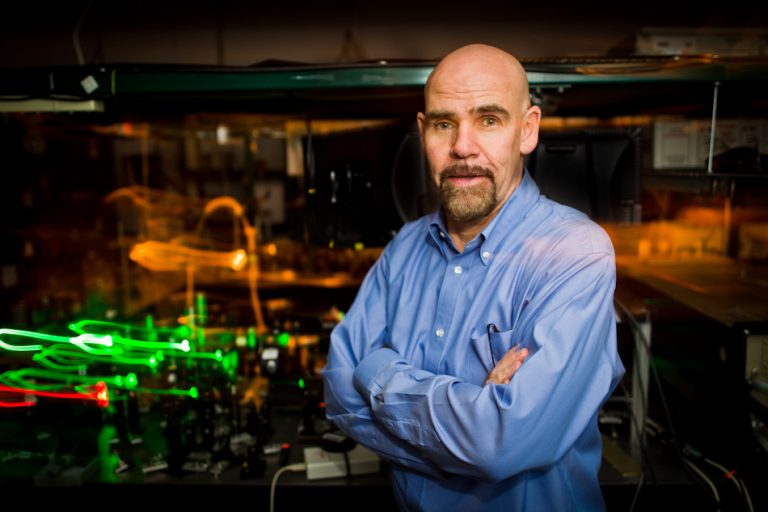A lightweight camera to locate hot spots and see through smoke could help a firefighter battling a fire. But today’s good infrared cameras must be very, very cold – and thereby cumbersome — to work.
Optics and lasers researchers at the University of Central Florida, led by Professors David Hagan and Eric Van Stryland, have found a technology that could eliminate the need for cold and the weight, making it possible to jettison expensive and bulky cooling units for large infrared devices.
The exciting discovery was made with a common material called gallium nitride that is currently used to read Blu-ray DVDs.
The team’s research is featured in the September issue of Nature Photonics out this week.
Much more research is needed. But Hagan said the new material may offer an alternative to expensive liquid nitrogen, which boils at a chilly 200 degrees Celsius below zero.
“If you have to cool with liquid nitrogen, it’s not very practical,” Hagan said. “This discovery opens up possibilities.”
Lightweight cameras are one possibility. Another is an infrared sensor on a military airplane that wouldn’t be bogged down by a bulky cooling unit.
Infrared detection and other thermal imaging systems are usually based on the material mercury cadmium telluride, or MCT. Researchers had long wanted to see if the material gallium nitride, or GaN, could detect infrared light and produce similar results compared to detectors with MCT.
The researchers used uncooled GaN detectors and an effect called two-photon absorption in which they tested two photons of light of different wavelengths.
“There are other technologies that measure infrared, but they are not very sensitive,” Hagan said. “We made the two-photon absorption very strong, and we found that using gallium nitride as a semiconductor provides surprisingly good sensitivity to infrared.”
Hagan and Van Stryland authored the paper with post-doctoral researchers Dmitry Fishman, Lazaro Padilha and Scott Webster and graduate students Claudiu Cirloganu, Trenton Ensley and Morgan Monroe in UCF’s College of Optics and Photonics.
The researchers used short bursts of light to conduct their initial experiments. Next, the team will test longer bursts that would be required to make the new technology practical. They also will be looking to develop devices that can house this new technology.
“People are always interested in new types of infrared detection,” Van Stryland said. “My guess is we’re going to find some application niches people couldn’t do before.”
